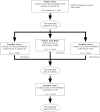ML212: A small-molecule probe for investigating fluconazole resistance mechanisms in Candida albicans
- PMID: 23946849
- PMCID: PMC3740683
- DOI: 10.3762/bjoc.9.171
ML212: A small-molecule probe for investigating fluconazole resistance mechanisms in Candida albicans
Abstract
The National Institutes of Health Molecular Libraries and Probe Production Centers Network (NIH-MLPCN) screened >300,000 compounds to evaluate their ability to restore fluconazole susceptibility in resistant Candida albicans isolates. Additional counter screens were incorporated to remove substances inherently toxic to either mammalian or fungal cells. A substituted indazole possessing the desired bioactivity profile was selected for further development, and initial investigation of structure-activity relationships led to the discovery of ML212.
Keywords: Candida albicans; Molecular Libraries Probe Production Center Network (MLPCN); antifungal; chemosensitizer; fluconazole.
Figures



References
Grants and funding
LinkOut - more resources
Full Text Sources
Other Literature Sources
